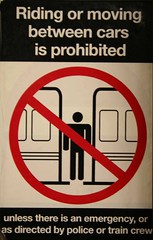The TRs is simply a rebranded name of Bombardier's Movia trains.
Ya know, looking at the specs of the train sizes, the line between heavy rail and light rail is getting quite blurred. We have "light rail" trains operating entirely in right-of-ways with protected crossings. Likewise, the Chicago Brown line also has protected crossings. If train size between the two is interchangeable, what makes the Chicago's heavy rail and Edmonton's light rail?
Maybe we could use this as an opportunity to get Transit City going. Convert our existing subway to overhead wires (there are heavy rail systems which use them instead of third rail), then operate Transit City with subway trains rather than "light rail" trains.
Okay, obviously this is not going to happen. But it could be a way to keep our rapid transit rail network standardized, and could also shut up those who want "subways" over "LRT".





